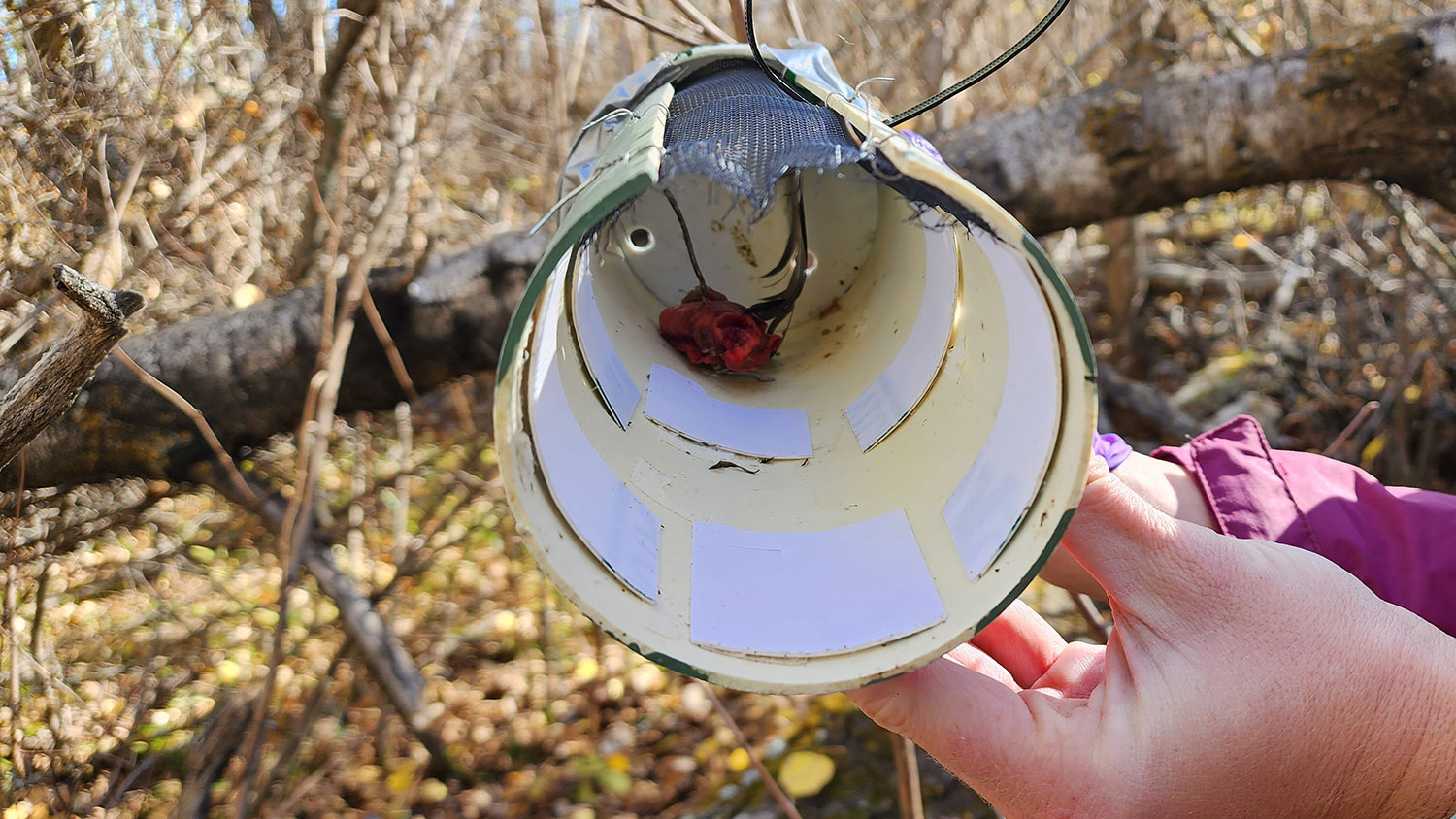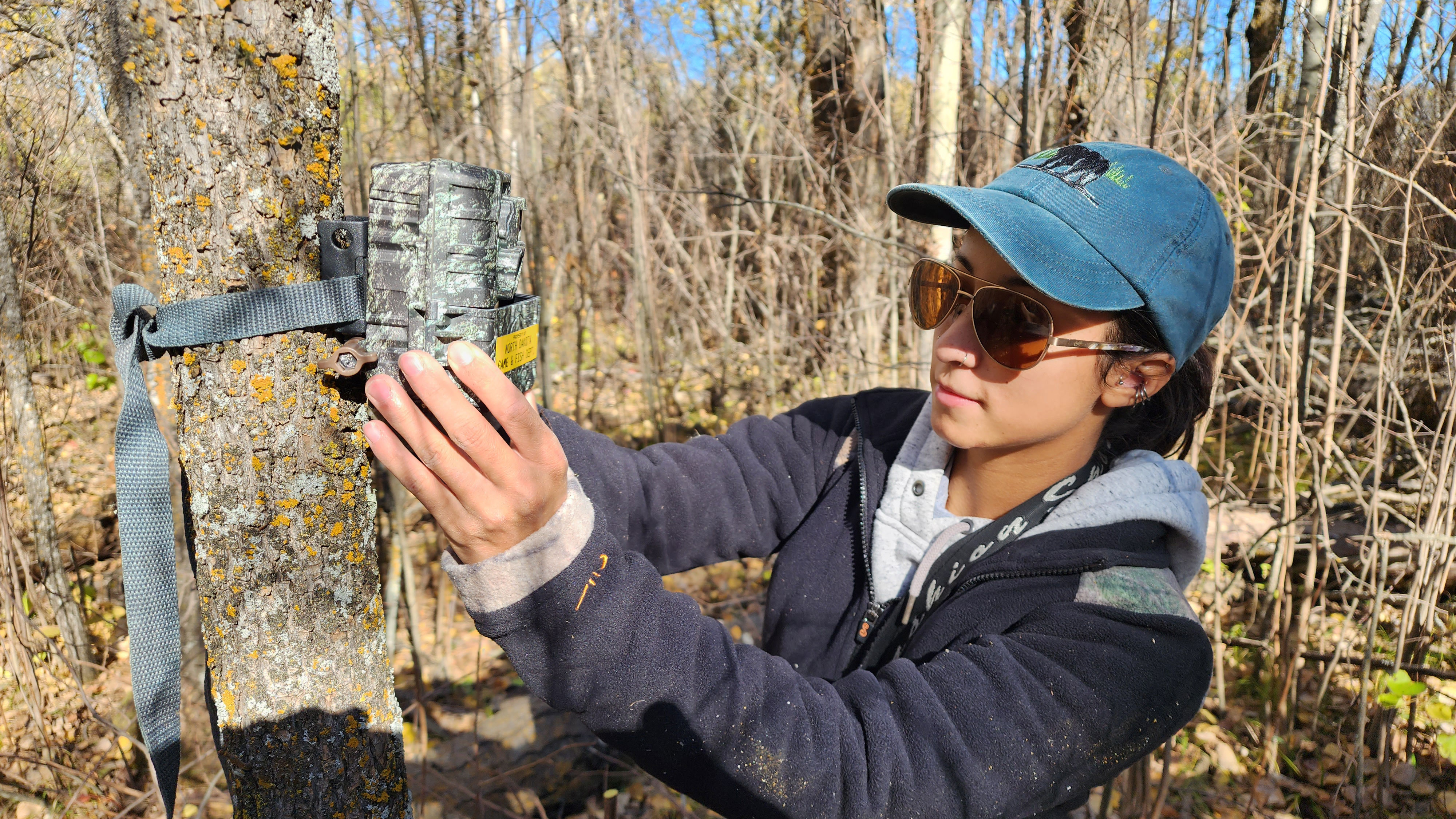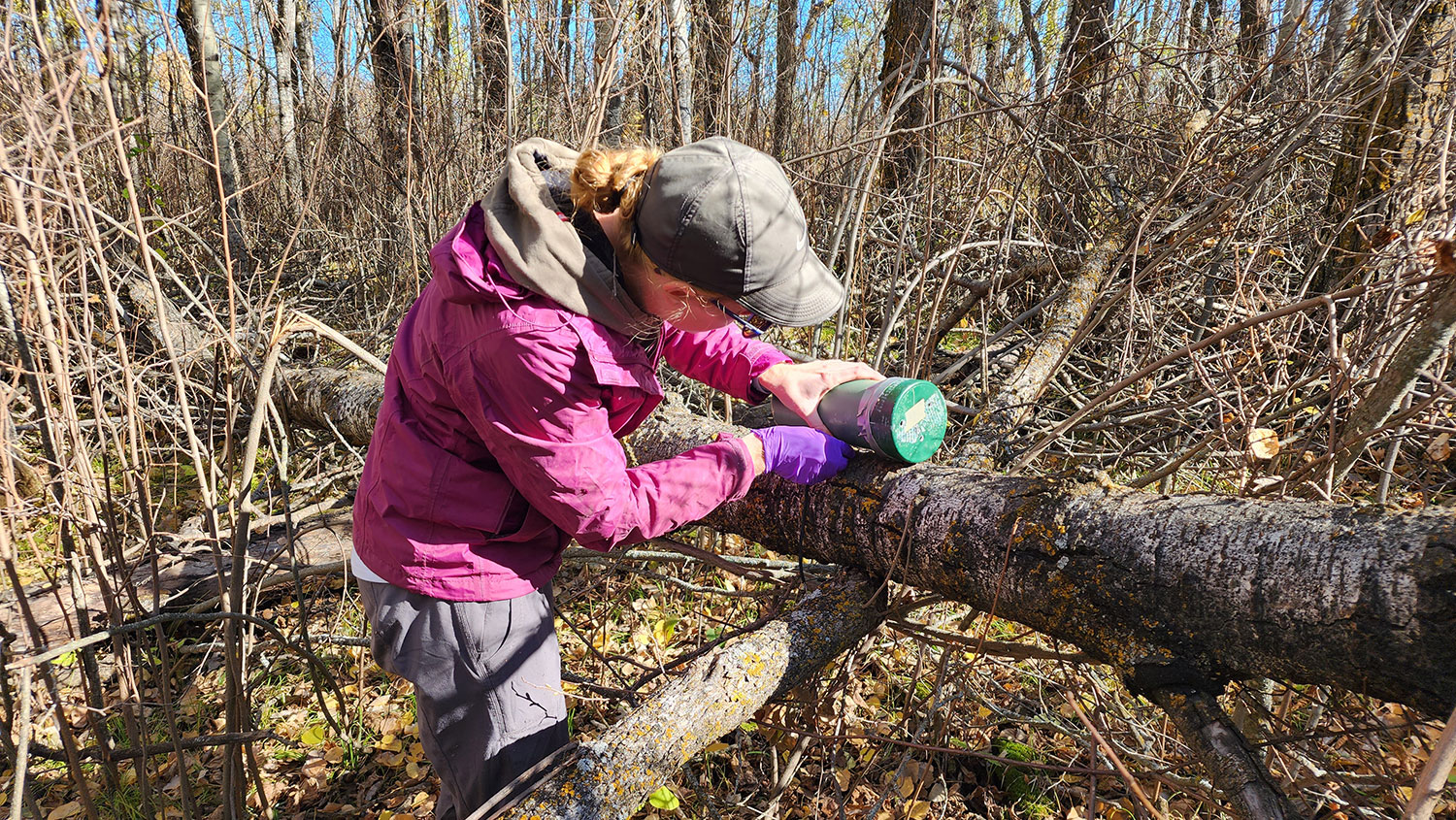Investigating American Martens
Ron Wilson

Surveying American martens in the Turtle Mountains stinks.
As we follow researchers through thick stands of face-slapping, ankle-grabbing trees in this gorgeous neck of North Dakota, the concoction of skunk and whatever else used to lure martens to the survey sites is strong. It doesn’t matter that the potion is stored in a sealed jar and stuffed into a backpack. It still smells like roadkill as we part the trees with our hands and arms as if we’re doing the breaststroke to get to the next location.
The lure, dubbed a call lure by researchers and trappers alike, also smells like success when these animals answer the call and leave hair samples on the sticky pads in cubby traps and are captured on trail cameras.
“The technique we’re trying out up here is a genetic mark recapture survey, and the only thing we’re capturing from the martens is their hair,” said Stephanie Tucker, North Dakota Game and Fish Department game management section leader. “We’re setting some cubbies that are baited, sort of like a trap, but there’s no part of the cubby that’s going to restrain or hold the marten. They are simply going into these cubbies to investigate a bait or a lure and hopefully leaving some hair samples behind in the process. We identify individuals using genetic analysis based on that hair. And then we’ll determine how many times they come back and visit those sites after we’ve marked them the first time.”
The fall of 2023 marked the second of three years that researchers from Michigan State University have tried to collect marten hair samples. Tucker said the Game and Fish Department is also working with the Turtle Mountain Band of Chippewa as a significant chunk of the reservation is in the southeastern corner of the Turtle Mountains.
“They have marten within their reservation boundary, too, because these animals certainly don’t adhere to administrative boundaries,” Tucker said. “To get a complete picture of what’s going on in this region, the Tribe is part of that. We are collaborating with them and they’re helping us with the survey within the tribal boundary, which will give us a complete picture for the Turtle Mountain region.”

The interior of the trap shows the bait used to entice martens to enter the cubby and hopefully leave hair on the sticky, white pads.
Jeff Desjarlais Jr., natural resource director for the Turtle Mountain Band of Chippewa, said it’s a good thing the two have joined to learn more about an elusive critter that has been on the landscape for some time.
“We love our partnership with the Game and Fish, and we’ve been talking about doing a marten study ourselves for a while,” he said. “And then Stephanie contacted us, and it was a great opportunity for our staff and myself to learn a lot more about the marten and the practice we want to go with moving forward.”
The American marten is a small member of the weasel family, and people are probably more familiar with its semi-aquatic cousin, the mink.
The marten hair samples are sent to a lab at Michigan State University where geneticists determine the identification of individual animals. Tucker said her primary collaborators at MSU are Dr. Gary Roloff and Dr. Steven Gray.
Tucker said Canada has had a marten season for about 20 years and she feels pretty confident the Department and Tribe can manage and support a limited harvest season in the Turtle Mountains.
“We just aren’t collecting enough data passively on martens to be able to pull that trigger yet,” she said. “That’s why we’re doing this research project so we can say with confidence, yes or no, we can have a limited, regulated trapping season. And this is what it’s going to look like when we have one.”


